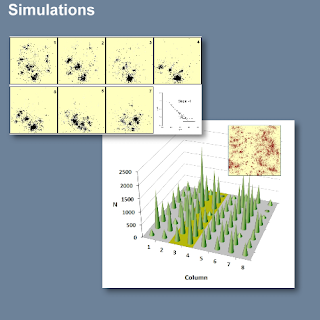About the book

OBSERVE: the book is now out in a new edition. Please find preliminary details on the Contact page.
Animal Space Use presents a range of system descriptors, model designs, and simulations; intrinsic properties from memory and scaling are illustrated in detail, and classical models are scrutinized with respect to compliance with real data. The presentations of concepts are geared towards a broad audience of researchers and students with interest in animal space use. A joint effort between biologists, physicists, and statisticians is now on track to provide a more coherent theory for ecological inference-with a potential for stronger predictive power of ecological models than from more classical approaches.
In Animal Space Use, Dr. Arild Gautestad advocates that an extension of the biophysical frame of reference may be needed to understand systems that express intrinsic complexity from the combined effects of scaling and memory. Any scientist in the field of animal ecology should stay abreast of the rapidly developing theory and applications of complex biophysics. This bold, provocative book provides an overview, a critical evaluation of existing concepts, and a wide range of theoretical proposals to resolve present challenges.
ANIMAL SPACE USE has been selected for the Dog Ear Publishing Award of Literary Excellence. This is a highly scientific/technical book for a very select audience of scientists in the field of animal behavior. It’s intelligent, well organized, and well written. Reba Hilbert Dog Ear Publishing Editor
I just have some overall comments on this wonderful book. I have read many papers by Arild Gautestad over more than 20 years, and I learned something new with each paper I read. But now I am extremely happy to have had the chance to read his manuscript, which puts more than two decades worth of highly original and important thinking together in one place. I enjoyed reading it very much, even though I have barely started to absorb many of the ideas, which goes far beyond Dr. Gautestad’s papers.
Dr. Don DeAngelis (Research Professor – University of Miami, physicist/biologist).
First of all let me say that I think this is a really beautiful manuscript, and the discussion provided is a substantial contribution to the field of movement ecology (and other).
Dr. Daniel Campos Moreno (Universitat Autonoma de Barcelona, physicist).
I have been satisfied with brownian motion frameworks, but primarily because I think it is better than doing nothing at all. … However, many of my field colleagues are generally hesitant to use brownian models as they dont realistically reflect an animal’s movements. So I can say that this a concern of the field community.
Dr. Yannis Papastamatiou (Research Fellow – Scottish Oceans Institute, University of St Andrews, wildlife ecologist).
Thank you for this wonderful blog. I’m fascinated by mathematical models of animal movement and search strategies, and I am a big fan of your scientific work. This blog is an excellent place to read your insights in a more personal and informal context. I always am excited when there is a news post. Thank you again.Comment by pseudonym "FuzzyMarmot" on October 27, 2019.



